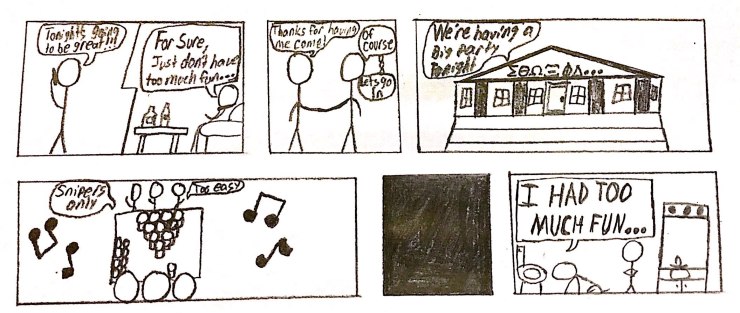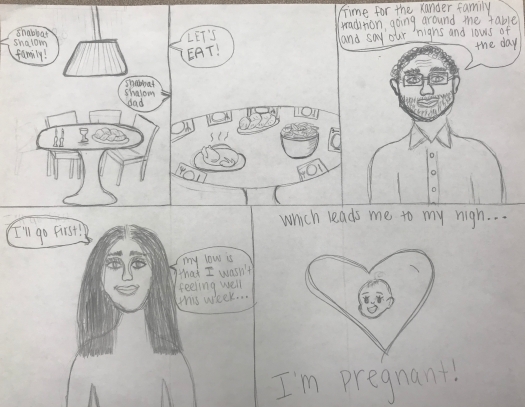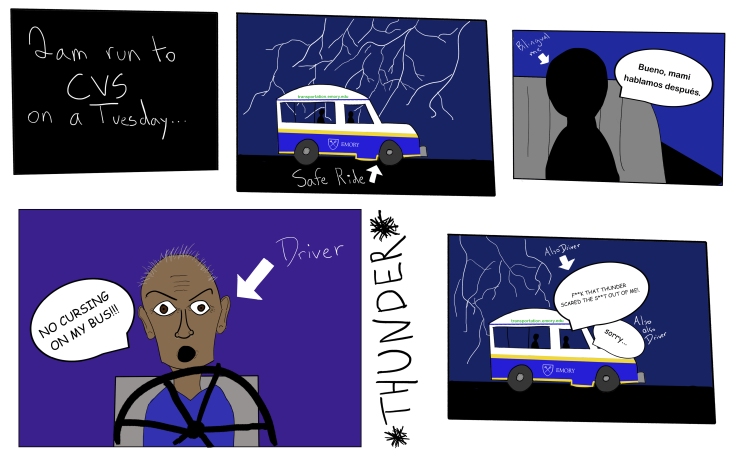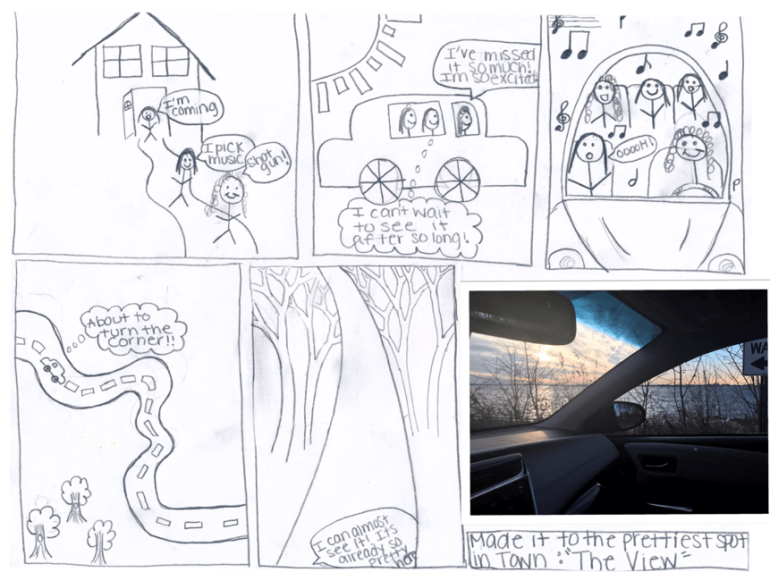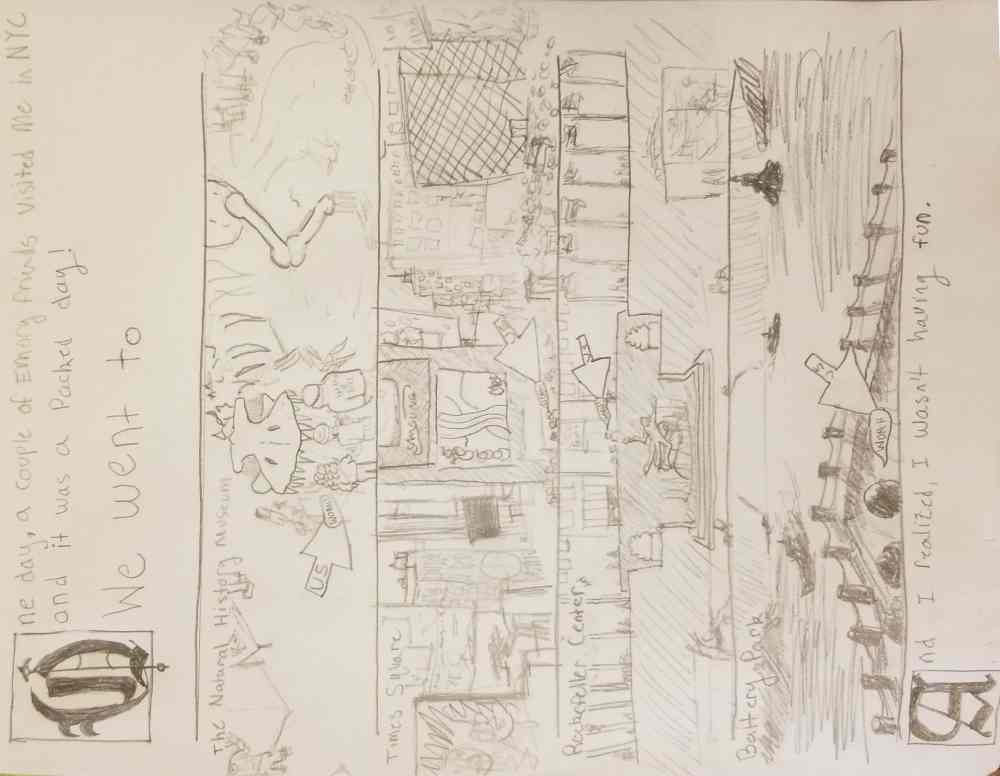Sketch 7: THAT Back Corner
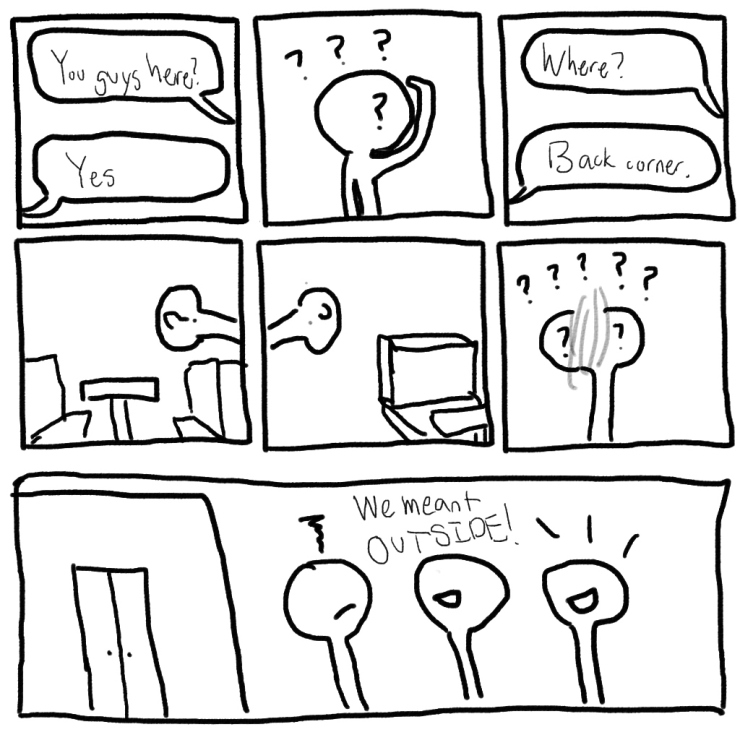
This comic was a funny moment in my spring break, hanging out with friends. But I realized it also could have a deeper meaning to it.
I decided I would grab dinner with a couple of my friends, as I’d missed them a lot and hadn’t seen them for a while. We arranged a time to meet up, and I showed up about 5-10 minutes late. I was worried they’d already started to eat, so I texted one of them and asked if they were inside. A quick reply told me they were here. I checked around initially, asked where specifically they were, and continued the search. After a bit, I came outside to call, and I discovered they were sitting right outside on the bench. Then, they joked with me that it was “outside back corner” that they meant. I wasn’t actually upset at them (I’m used to their shenanigans at this point), but I drew it that way in the comic because it felt more conclusive.
I knew this was the right story because it teaches a valuable lesson. It teaches the lesson of perspective and how it can affect things. While it was true that they were in the outside back corner, I had assumed they were inside of the restaurant in the back corner. But, of course, I had assumed the logical path and didn’t even consider the illogical path. But life isn’t logical. At least, not always. There have been many things that have happened in my life, and likely your life, that have made us think: “That doesn’t make sense.” Perspective and logic are two things that are, sometimes, taken for granted, and we don’t seem to account for the idea that things don’t always go one certain way.
It’s actually quite difficult to tell a true story in a short comic. Most “truths” or “events” go well beyond a simple single-digit panel event. So to find something to condense into a short and sweet comic is absolutely difficult. Especially when you are attempting to find some “truth” in it. With the two poles of a spectrum being Spiegelmann and Sacco, I imagine that this story falls more on the side of Spiegelmann. It tells the perspective of a decently truthful event without too much bias, similar to the style of Speigelmann’s Maus.
While creating this comic, I had to decide the style and panel formation that I wanted to go with. I decided on a big panel for the last punch line, as I feel that would amplify it that much more. I decided on a more stick-figure like format for the characters because I wanted it to be simple. But I also wanted to experiment with expression on stick figures and without faces. I’ve seen it quite a few times previously, and I really wanted to try it out. I think it turned out okay, but I might go back to drawing faces; it’s easier for me, even if my faces are terrible.

